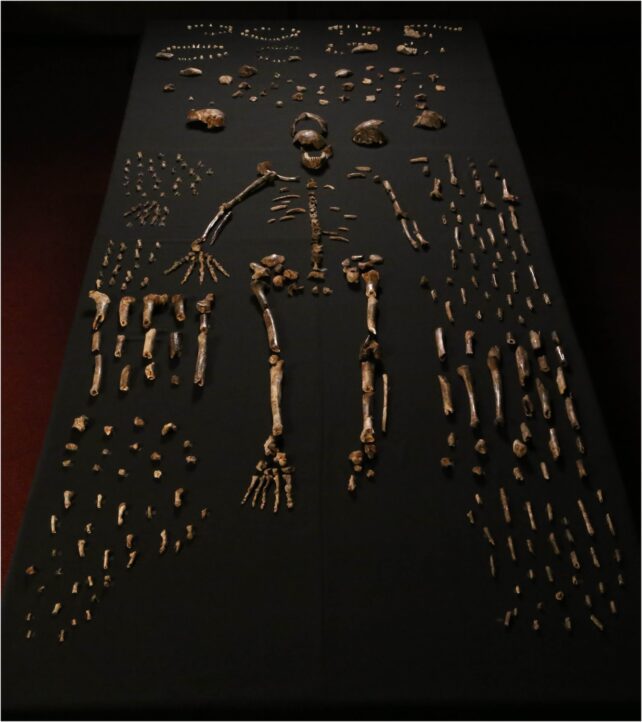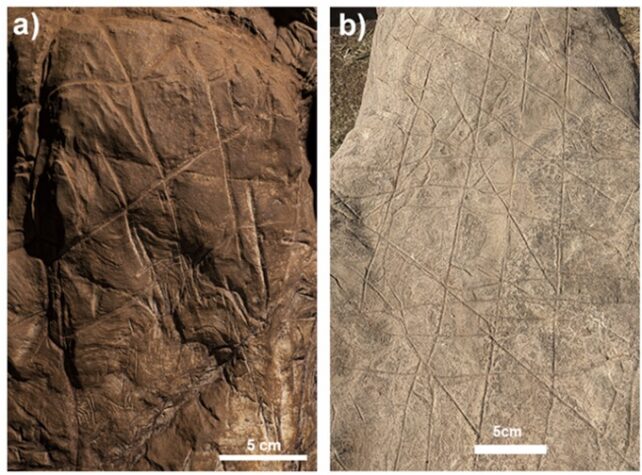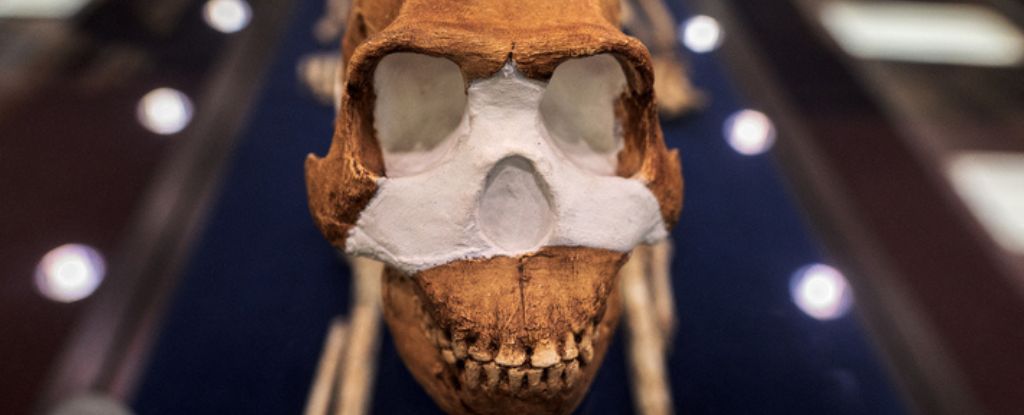In 2013, a group of scientists squeezed through a deep, twisting cave system to examine hundreds of bones belonging to a newly discovered species of human ancestor named Homo naledi.
Ever since, the cave and its bones have challenged our understanding of human evolution.
The remains bore a puzzling mix of primitive and modern-looking features, prompting researchers to think H. naledi represented a species at the crossroads between our ape-like ancestors and modern humans.
The fossils had feet made for walking and human-like hands, but with long, curved fingers suited to climbing and an orange-sized brain similar to that of a gorilla.
And yet, according to the team who discovered the site, the bounty of bones found nearly 80 meters (260 feet) from the entrance suggested H. naledi may have hauled the remains into the cave to bury them, displaying ritualistic behaviors typically associated with bigger-brained human species like our own.
Carvings on the cavern walls and charcoal fragments only made the story put forward by researchers even more enthralling; maybe this small-brained human relative, which lived 300,000 years ago, made art and buried its dead at least 100,000 years before the earliest known human burial.
Other scientists and peer reviewers weren’t convinced. And neither are the authors of a new critique that sifts through the evidence presented by paleoanthropologist Lee Berger and his colleagues, which was published in a series of preprints earlier this year and, more controversially, promoted in a Netflix documentary, Unknown: Cave of Bones.

Big claims need rock-solid evidence, but María Martinón-Torres, a forensic anthropologist at the National Research Center on Human Evolution in Spain, and colleagues argue Berger’s team hasn’t presented enough data to support suggestions that H. naledi were interring deceased kin or decorating sacred sites long before Homo sapiens.
“The evidence presented so far is not compelling enough to support the deliberate burial of the dead by H. naledi nor that they made the purported engravings,” Martinón-Torres and colleagues write in their peer-reviewed paper.
Scrutinizing the available data, Martinón-Torres and colleagues note the H. naledi bones were scattered, and not arranged in skeleton form or carefully placed as one might expect from a burial.
They say it’s also unclear where the ‘burial pits’ start and end, which combined with their irregular shape, suggests they are more likely to be natural hollows or sinkholes created through erosion or sediment slumping than intentionally dug graves.
Berger and colleagues didn’t consider or test other possibilities for how the bones ended up so deep in the cave, which is very difficult to access, Martinón-Torres and colleagues argue. The bones could have been washed in or carried underground by animals, or the cave itself may have shifted over time.
The ‘charcoal’ hasn’t been sufficiently dated, and neither have the scratch-like markings. The charcoal could instead be from wildfires that commonly occur in South African caves, the researchers say, so the possibility that H. naledi used fire to illuminate the caves “remains entirely speculative”.
“Detailed analyses are also needed to demonstrate that the so-called ‘engravings’ are indeed human-made marks, as marks like these can be produced as a product of natural weathering or animal claws,” says co-author Diego Garate, an archaeologist at the University of Cantabria.

Further investigations of this astounding site are clearly needed to fill in the blanks about H. naledi.
Martinón-Torres and colleagues question why Berger’s team went so far as to claim H. naledi dug graves based on just 3 individuals without comparing them to the other 12 partial skeletons found nearby. Others have accused Berger and colleagues of rushing the science to make headlines.
Rather than excavating all the bones, Berger and team say they opted to leave material in place as much as possible “to enable further testing and replication” so we’ll have to see what is unearthed next.
It’ll be a long time yet before this controversy is laid to rest.
The study has been published in the Journal of Human Evolution.


